Cart
You have no items in your shopping cart

We go over the top ten most common beginner Stand Up Paddleboarder mistakes.
At Blue Planet we have taught thousands of people how to Stand Up Paddle board through our free clinics and our How to Stand Up Paddle videos on youtube have been watched over 5 million times. We have probably seen every possible beginner mistake, but here is our lineup of the top 10 most common SUP mistakes:
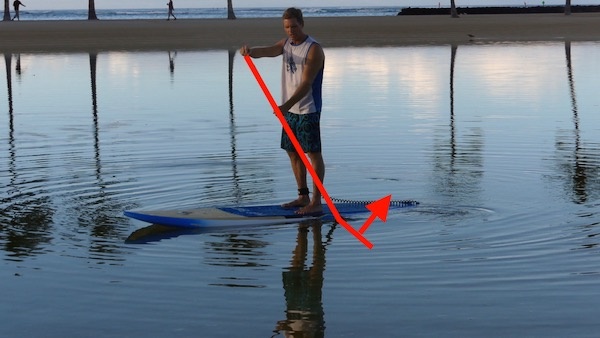
#10: Holding the paddle backwards and hands too close together
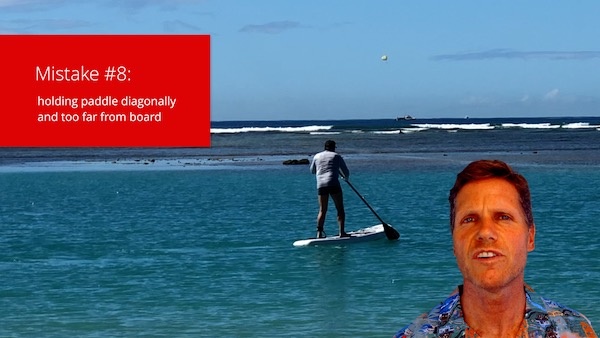
#9: Using only the tip of the blade and not reaching forward

#8: Holding paddle diagonally and too far away from board
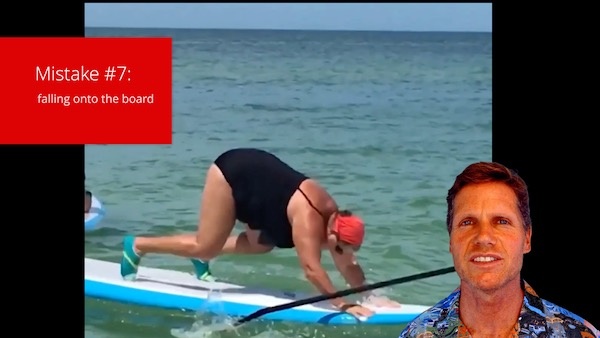
#7: Falling onto the board instead of into the water
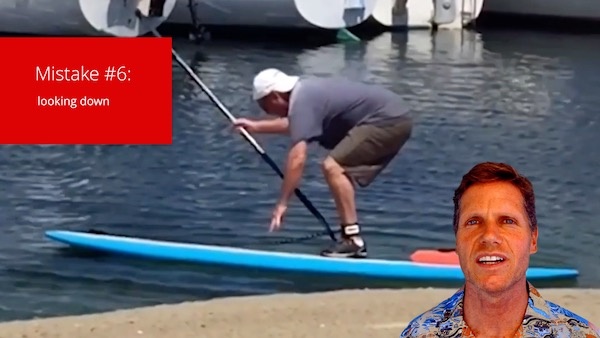
#6: Looking down instead of forward

#5: Kicking under the board when trying to get back on
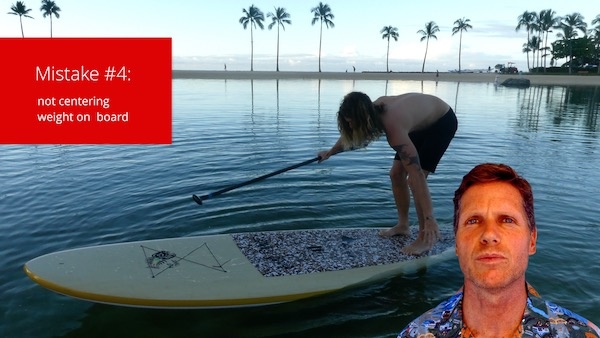
#4: Not centering weight on board
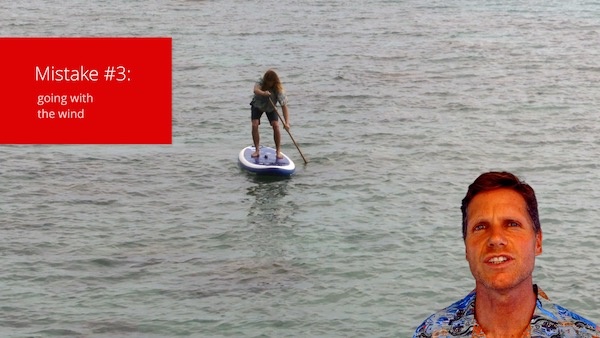
#3: Drifting with the wind and not controlling the direction
#2: Going out in dangerous conditions and/or with the wrong gear

#1: Not wearing a leash
In the video above, we go into detail on how to correct each of these mistakes and how it will help you develop good habits and efficient paddle technique.
Also covered: Choosing the right gear- board volume, width, length, paddle length. Beginner friendly and safe conditions. Demo boards before buying, why not wearing a leash can be deadly. Efficient paddle stroke technique. How to fall safely in to the water- not falling on board or jumping in feet first.
Special thanks to DJ for providing the no leash footage at 10:20. Check out more of DJ's great downwind videos here:
https://vimeo.com/user372910
Please check out all the videos in our SUP Tips playlist for more instructions:
https://youtu.be/jIpkzGDrT9k
Thanks for watching, please subscribe to our channel.
Aloha, Robert Stehlik
This is the full transcript of the Top 10 Mistakes video above:
Aloha, it's Robert Stehlik. Here at Blue Planet we've taught thousands of people how to stand a paddle through lessons and our free SUP clinics and we've seen all kinds of mistakes, including two guys that rented a board from us and they tried to paddle with the board upside down, fin sticking up, and they were wondering why it's so hard to balance and why it's so slippery until somebody told them: Maybe you should turn that board the other way around so the deck pad is up and the fin is down. But that's not the most common beginner mistake. We're gonna go through the top ten mistakes quickly and then I'm going to go into detail on each one, how to do it correctly and hopefully that'll help you develop good habits and become a better paddler.
So let's go into the top ten mistakes.
Okay so next I'm gonna go over each mistake and show you how to do it correctly.
Mistake number ten is holding the paddle backwards and holding the hands too close together, so holding the paddle backwards, a lot of people do this, they think intuitively that they can grab more water this way but what happens here is that you end up pulling water up, which instead of propelling yourself forward actually compresses you down onto the water. So what you want to do is hold it this way, this is the correct way, this way you propel yourself forward, create a little bit of lift and forward propulsion. So the other mistake is holding the paddle too close together. If you're holding the paddle too high it's really hard to get enough leverage on the blade, so instead of just holding your top hands too close together, you want to get a nice wide grip ideally if you make right angles with your elbows, put the paddle on your head, this is about where your hand should be, about half way down the shaft between the blade and the handle, that's where your hand should be, this way you can get nice leverage on your strokes. Also what people often do is when they switch sides they'll switch, instead of switching one hand to the other in the same spot they'll hold one side too high like this, and then on the other side hold it in a different place, so when you switch you want to make sure you don't change heights.
Okay so number nine another common paddle handling mistake is first of all not using the whole blade. A lot of beginners tend to just use the tip of the blade and they're not really getting any traction in the water, they're just kind of slipping through the water and also not getting a full reach forward, so putting the paddle in kind of too far back and then pulling it all the way back here and throwing water behind behind you, this is very inefficient so to it correctly you want to plant the whole blade in the water so the whole thing is buried up to here in the water, and then get a nice reach forward, plant it, and then pull and your pull should pretty much end at your feet and then come back out. So pull to your feet after that you're just bringing the paddle back out and coming back forward.
So mistake number eight is holding the paddle too diagonally and too far away from the board, most beginners will hold the paddle kind of like this and paddle out here and that's going to make your board go left and right, wander zigzag around, so what you want to do is hold the paddle vertical, straight up and down, kind of reach with the top hand over the rail and then pull the paddle back in a straight line, keep it close to the rail, that way you get the maximum forward projection, without too much sideways movement. That way you can get more strokes per side and go faster and straighter.
So common mistake number seven is falling onto the board instead of falling into the water. Now a lot of beginners try to kind of catch their fall like they're on land. you know if they're going to fall they're gonna try to catch themselves and fall on their knees or fall out on their hands but that's a way to hurt yourself the board is hard, the water is soft, so if you're gonna fall, just avoid the board and fall into the water. it's much safer, people have broken their ribs, hurt their wrist, damaged their boards, or hurt their knees. Try to avoid the board and fall into the water.
Common mistake number six is looking down instead of looking forward. So a lot of people when they stand up they get into this position and then they struggle and they look down and they get the paddle up here and it's very hard to find your balance if you're looking down at the board or down at the water, so the idea is to stand up, straight look forward, look at the horizon, look at something stable, and then start paddling and let your legs do the balancing. Keep your paddle in the water for balance.
Okay, so common mistake number five is kicking under the board trying to get back up. So a lot of people struggle to get back on the board because they're not kicking their feet in the right place. If you're kicking underneath the board and trying to use your arms to pull yourself up, you'll kind of lift the board up but you're not really going to lift your body up onto the board, so the best way to do it, get back on the board, is to kick the legs behind you so you're kind of flat in the water, and then it's easy to slide the chest back onto the board, spin your legs around, get back on your knees, and start paddling again.
Mistake number four is not placing your weight in the right place of the board so in surfing we call it trimming the board, it's basically finding the spot where the board's gonna glide the best and on flat water that is having the board flat, level to the surface. a lot of times when people get on the first get on the board they might have their feet kind of off-center so if one foot is closer to the rail than the other. Then you end up being off-balance because your weight is on one side of the board instead of being centered in the middle of the board. So that's one thing being centered in the middle of the board the other thing is being centered front to back. So the handle is a good place to orient yourself, you want to be close to the handle usually, because that's the center of the weight of the board, which is also the center of the volume, so if you're like way up here on the board, close to the nose, you'll have the nose kind of really low in the water, tail sticking out, and this is not an efficient way to paddle, because you're kind of pushing through the water with the with the scoop of the nose. You're not gonna glide as well as in the middle of the board. If you're too far back, the board's gonna become very unstable, the tail is gonna sink and then when you paddle it's going to turn very easily. so if you won't get good glide, you're going to drag through the water, and the board won't track well. I wanna be kind of right where the handle is this is where the board's flat to the surface, parallel to the water surface, it's going to glide well and track the best common.
Mistake number three that beginners make is, if it's windy they tend to just kind of let the wind carry them downwind. So, it's important when you're first starting out that you go out in nice, calm conditions, ideally, but if it is windy, try to paddle upwind first because if you start drifting with the wind you can end up way downwind and then as you're turning around trying to paddle back to where you started it can be very difficult to make it back upwind.
Mistake number two is going out in the wrong conditions or on the wrong equipment. Especially as a beginner, when you're struggling with your balance still and especially for taller, heavier people, you need a lot of volume and you need a wide board to give you stability. So today is a perfect day for learning. This is here at the Hilton Hawaiian Lagoon, the water is super smooth and calm, that makes it very easy to find your balance. There's no waves, no chop, and it's an enclosed area so there's no way to drift off and there's no rocks things like that. So going out at the right place and the right conditions will make it much easier for you to learn, and then of course having the right board and the right paddle. The paddle should be a little bit over your head, we like to say about a Shaka sign over your head, maybe six to ten inches over your head for cruising and paddling is a good length. the board should be wide and stable enough, and have the right amount of volume for what you need. We have a really good video that Kevin at our shop made that I'll link to above so you can look at that and you'll get some good information on how to choose the right board. In the beginning we find that a lot of people are just focused on the price of the board, buying whatever they can find that's the cheapest board, maybe at a big-box store, or a used board, but it might not necessarily be the right board for them. If you get on it and you find out it's not a good board for you, then that great price was a terrible value because you end up having to buy a different board. So we always recommend trying lots of different boards before you decide which one to buy and to do that, we have some great programs at our shop, we have a try before you buy rental program, where you get a full credit for your rental fees. We also have free clinics where you can try over 40 different boards at the beach. we'll bring them all down to the beach for you, you can just try them out, see which ones you like. So if you're in Honolulu, check out our free stand up paddle clinics to find the best board for your needs.
So the number one and potentially deadly mistake that beginners make is not wearing a leash. Leashes are super important, It's your lifeline, basically if you fall off the board, it is what connects you to the board, it keeps the board close to you, and it makes the board your floatation device. If you don't wear a leash and you fall off, the board can get away from you quite quickly, especially if you fall off the back, it will just shoot out and can go fly away, and if it's windy, you may not be able to catch up to the board. There's actually a really good video online from a friend of mine, DJ from Australia, who forgot to bring his leash on a downwinder and he fell in, lost his board, and his partner that was paddling with him was able to retrieve the board, and she attached her leash to his board, and then ended up falling in herself and losing both boards. So they both tried as hard as they could to swim after these boards but the wind was just too strong and carried the boards away. So they were stuck outside, both of them without boards, having to swim all the way back, long swim in, so luckily there they were okay, but that's something you don't want to have to have happen to you. So just take that precaution, always wear a leash. The leash is even more important than a life jacket. On the the mainland a lot of places you have to wear a life jacket. Here in Hawaii the Coast Guard does not require it. as long as you're wearing a leash, the board becomes your floatation device. But if you do wear a personal floatation device, try to make sure you always wear it on your body, because when it's tied to your board... I mean the worst combination is having a PFD tied to your board and no leash, because it makes you feel like you're doing the right thing and you're safe, but if you fall and the board blows away, you're stuck in the water without a board, without a life jacket, and that can be dangerous, especially like I said, in offshore conditions with the wind blowing you out, or if you're far out to sea, that can be very dangerous or in cold water where you can quickly have hypothermia, you don't want to be stuck in the water without your board, so always wear a leash, really important, I can't stress that enough.
Okay, so that sums it up for the top 10 beginner mistakes. Some other common mistakes that did not make our top 10 list include: Setting the board down too early, before the fin clears the sand. Also switching sides without switching your hands, and lastly jumping in feet first instead of falling flat. Yeah, thank you Tyler for doing all the stunt work and showing us how not to do it. Definitely don't try this at home, it can't be dangerous, we used an inflatable board, which is a little bit safer than a hard board, but we definitely don't recommend falling on your board. We did use a couple clips from some other beginner videos, if you'd like to check those out, there's a link in the description. Yea and always remember that if you're in the ocean, you're just a guest. Learn the proper etiquette, in the surf especially, and respect the locals. Don't mess with the locals. So we hope you enjoyed this video, if you liked it, give us a thumbs up, and subscribe down below if you're not already a subscriber. So thanks for watching and aloha also if you want to check out some of our sup tip videos, here's the link, and if you're interested in buying a board, check out our website, BluePlanetsurf.com where we offer free air cargo shipping in the US on stand-up paddleboards, surfboards, and foil boards, so check it out.
Aloha!
Comments
Be the first to comment...